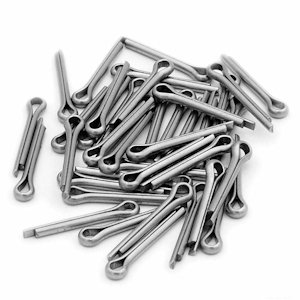Threaded Fasteners vs. Non-Threaded Fasteners: Pros and Cons
When it comes to joining materials in construction, manufacturing, or everyday DIY projects, choosing the right type of fastener is essential. Two primary categories of fasteners you'll often encounter are threaded and non-threaded fasteners. Each has its own set of advantages and disadvantages.
Threaded fasteners, such as screws and bolts, are designed with helical threads that grip and secure materials together. Here are the pros and cons of using threaded fasteners:
Pros of Threaded Fasteners:
Strong and Secure: Threaded fasteners offer excellent clamping force, making them ideal for applications where a strong and secure connection is necessary.
Adjustability: You can easily adjust the tightness of threaded fasteners, which is especially useful when alignment is critical.
Versatility: Threaded fasteners are available in a wide range of sizes, materials, and designs, making them versatile for various applications.
Easier Assembly and Disassembly: Threaded fasteners can be removed and reinstalled without damaging the materials, making maintenance and repairs more straightforward.
Thread Locking: They can be used with thread-locking compounds to prevent loosening due to vibrations or dynamic loads.
Cons of Threaded Fasteners:
Complex Installation: Installing threaded fasteners can be more time-consuming compared to non-threaded options, especially in large-scale projects.
Potential for Cross-Threading: Care must be taken to avoid cross-threading, which can damage the fastener and materials.
Increased Cost: Threaded fasteners, especially specialty or high-strength varieties, can be more expensive than non-threaded alternatives.
Non-threaded fasteners, which include staples, clips, and pins, do not have helical threads. They rely on other mechanisms to secure materials together. Here are the pros and cons of using non-threaded fasteners:
Pros of Non-Threaded Fasteners:
Quick Installation: Non-threaded fasteners are often faster to install, making them a time-saving option for high-volume or repetitive tasks.
Simplicity: They are generally simpler to use, making them accessible for DIY projects and applications where ease of use is a priority.
Low Cost: Non-threaded fasteners are usually more budget-friendly, which can be a significant advantage for cost-conscious projects.
Low Profile: Non-threaded fasteners often leave a lower profile or no protrusion on the material's surface, which can be desirable for certain aesthetic or functional reasons.
Cons of Non-Threaded Fasteners:
Limited Strength: Non-threaded fasteners may not provide the same level of clamping force as threaded alternatives, which can be a limitation in high-stress applications.
Lack of Adjustability: Once non-threaded fasteners are in place, they are typically not adjustable without removal.
Materials and Applications: They are not suitable for all materials or applications, especially those requiring a high level of structural integrity.
The choice between threaded and non-threaded fasteners depends on the specific requirements of your project. Threaded fasteners are known for their strength, adjustability, and versatility, but they may be overkill for simpler tasks. Non-threaded fasteners offer simplicity and cost savings but may not provide the same level of clamping force or adjustability.
Consider the nature of your project, the materials you're working with, and the desired outcome when selecting between threaded and non-threaded fasteners. In many cases, a combination of both types may be the most practical approach to meet your project's unique needs. Ultimately, understanding the pros and cons of each type will empower you to make informed decisions and achieve successful results.
If you need assistance determining whether you should use threaded or non-threaded fasteners in your application, contact Mudge at (800) 634-0406 and we’ll be happy to help.


